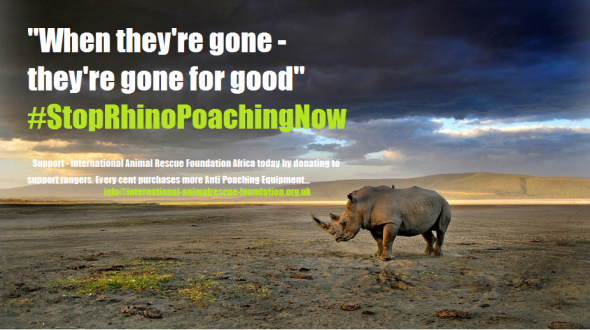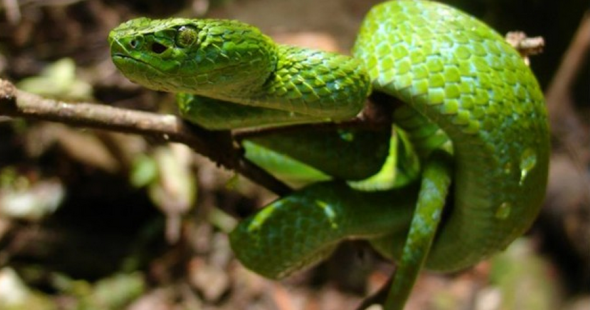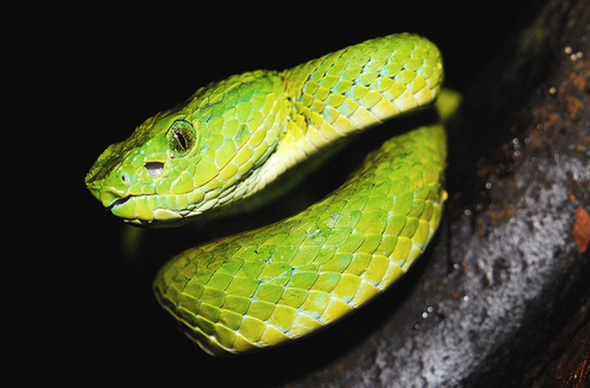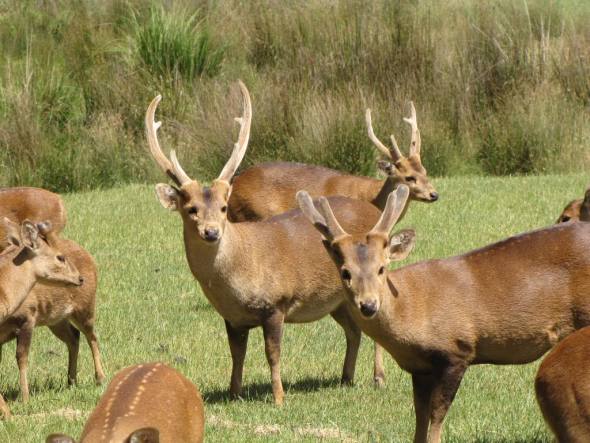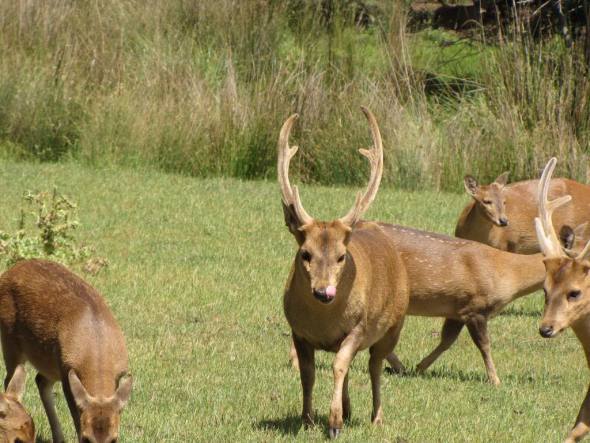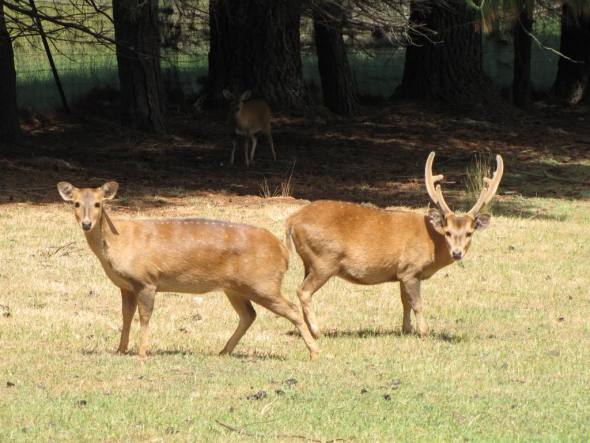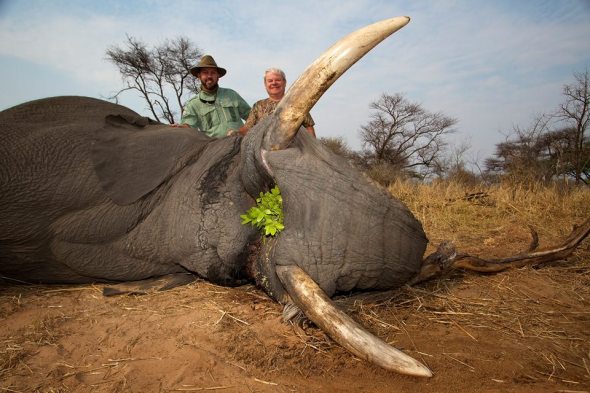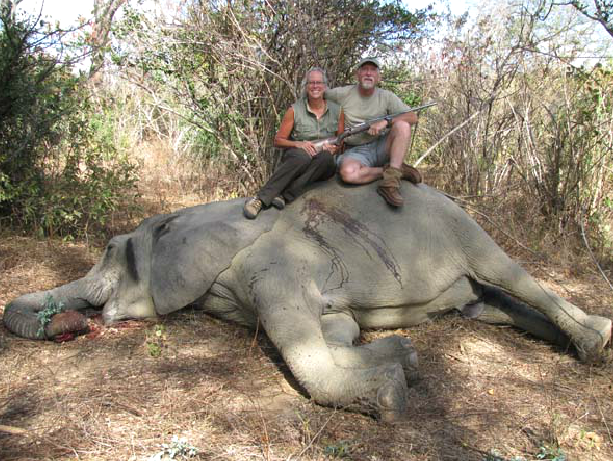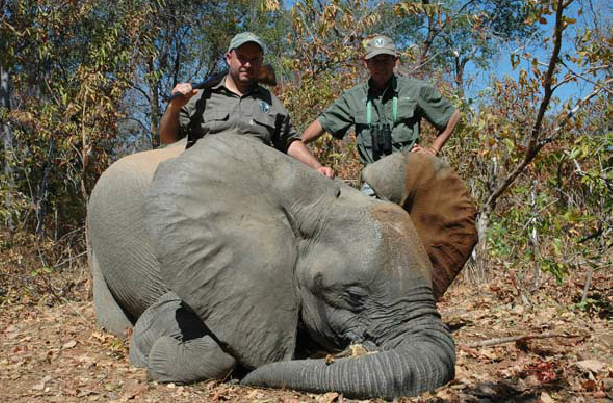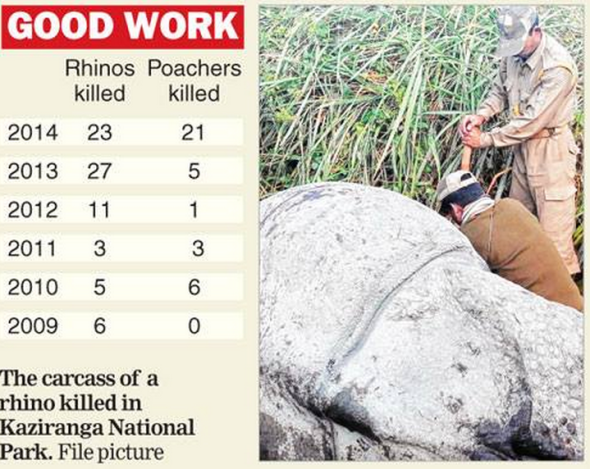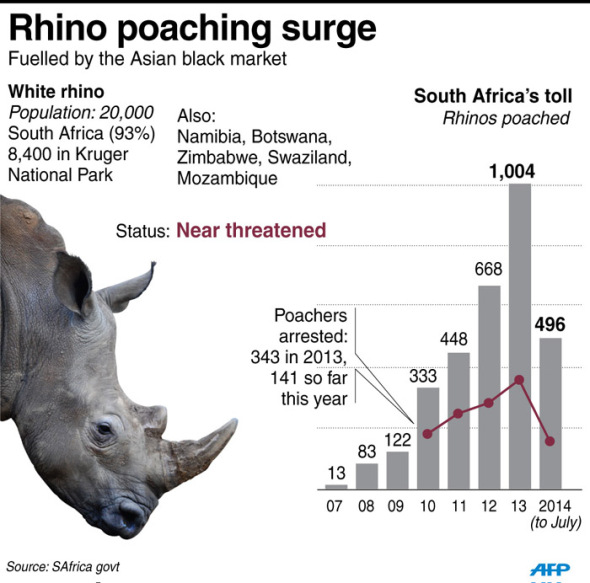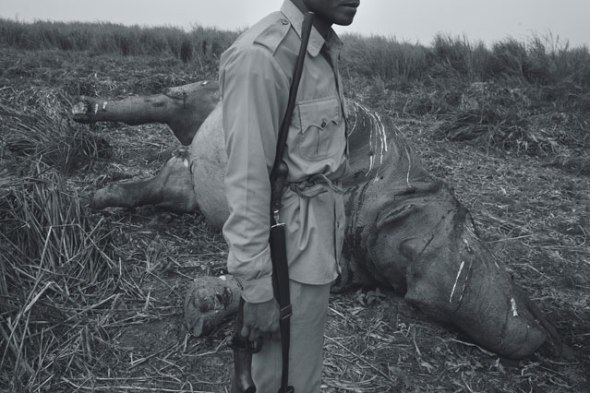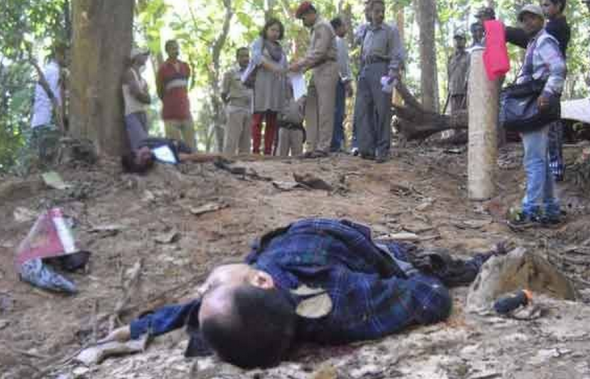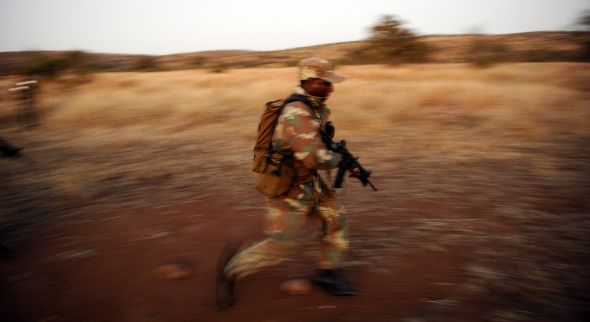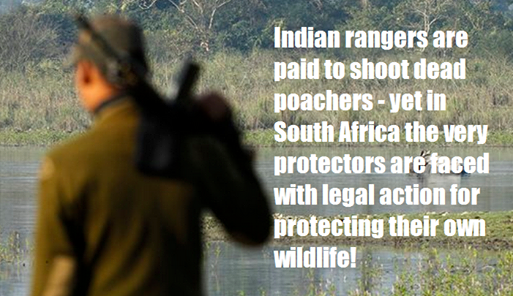Endangered Species Monday - Axis calamianensis
Endangered Species Monday - Axis calamianensis
This Mondays endangered species article we take a brief look into the secretive and rather elusive life of the Calamian Hog deer scientifically identified as - Axis calamianensis the species is also commonly known as the Calamanian Deer, Calamian Deer, Calamian Hog Deer or the Philippine Deer.
(Pictured above: Calamian Hog stag)
A. calamianensis was formally identified back in 1888 by Dr Pierre Marie Heude (1836–1902) was a French Jesuit missionary and zoologist. Born at Fougères in the Department of Ille-et-Vilaine, Heude became a Jesuit in 1856 and was ordained to the priesthood in 1867. He went to China in 1868. During the following years, he devoted all his time and energy to the studies of the natural history of Eastern Asia, traveling widely in China and other parts of Eastern Asia.
From 1986 - 1990 A. calamianensis was listed back then as vulnerable however, since this time much has changed regarding the species habitat, and way of living. From 1994 Dr Groombridge identified the need to re-list the species as (endangered) of which a further evaluation after a more in-depth census was concluded (1996) showed the species to be verging near extinction. The last “population census” undertaken in 1996 confirmed the species was still endangered, which led to evasive and aggressive conservation projects to be put into action to preserve the species.
Image: Calamian stag a little uneasy on his feet
Endemic to the Philippines the species is restricted to the Calamian Islands in the Palawan faunal region. The species occurs on three of the four larger islands of Calamians, i.e. Busuanga, Calauit and Culion. Sketchy reports have suggested the species also occurred on at least nine other related islands too however, little evidence backs these claims up.
Reports have confirmed that localized extinctions have occurred in some (78%) of these islands; (Bacbac, Capari, Panlaitan, Galoc, Apo, Alava and Dicabaito), and to survive on only two of these islands, namely Marily and Dimaquiat. A. calamianensis is not known to occur anywhere else from outside of its now fragmented ranges.
Commonly viewed within most of its native range back in the middle 1940’s population sizes have seriously diminished since the late 1990’s. While many drastic declines were seen throughout the 1990’s one area that didn’t see population declines was that of the extreme south of Culion, by the mid-1970s.
By the time the Calauit Island Game Preserve and Wildlife Sanctuary was created, in some way to preserve species populations, conservation actions were already to late of which populations had declined quite rapidly. Reports placed the population size from 1,900 “individuals” which equated to around 250 “mature individuals (if that).
Recent surveys from 2006 showed quite drastic declines of which hunting was yet again the main primary cause for the species nearing extinction (many hunters try to defend and debate this - yet the evidence is there in black and white for them all to view). Despite a negative outlook from the last “official” 2006 census populations were still said to be quite widespread in Calauit, Busuanga and Culion. The 2006 census conducted by environmentalists, Rico and Oliver also confirmed the species populations were quite dense on the islands of Marily and Dimaquiat.
The overall reports into present population sizes though is not good, and its with sad regret to report that populations are continuing to decline at a very rapid rate, despite the species coming under some protective plans there really is no real “protection or even law implemented into action” to protect this species for future generations to come. Listed on the Convention on International Trade of Endangered Species (Cites) Appendix I localized hunting for food continues to place the entire species in “great danger of nearing extinction” within the next five to seven years. However I must state that “should” extinctions occur in the wild, captive breeding programs are already in place in the hope to later reintroduce the species into a newer, and safer habitat.
Image: Doe and Stag
Current plans to preserve species are that of protective breeding programs for later reintroduction back into the wild. San Diego Zoological Gardens currently hosts some fifty four (54) inhabitants successfully bred within the zoo and managed well.
Threats
Currently research has proven the local people to hunt the species for food and use within dress and musical instrument production. Hunters within the species endemic island ranges are known to hunt the species for its antlers for use within the home as a decorative piece. Antlers are prized among the locals.
The species is threatened due to hunting pressure and human settlement and agricultural expansion over its very limited range, coupled by the evident lack of effective and sustained enforcement of the strong local protective legislation.
Hunting was particularly severe during the mid-1970s, but seemingly declined in most areas during the 1980’ and 1990’s, except on Calauit where hunting pressure increased dramatically following the resettlement of the island by former residents under the auspices of the ‘Balik (Back to) Calauit Movement’. In 1986, 51 out of the 256 families evicted from the island ten years earlier had re-settled on the island, and by 1992 the settlers numbered nearly 500 people.
Much of the hunting of the species is recreational, and also to provide venison to the local markets. On Calauit, introduced African ungulate populations are increasing but are probably not competing with Calamian deer. A presidential proclamation that precluded removal or control of exotic species, and the movement or management of Calamian deer on Calauit Island was recently amended, thereby also potentially enabling the better future control of the exotic ungulate populations, though in fact many of these populations have also been seriously reduced by poaching.
While relatively large parts of Busuanga and Culion Islands are still undeveloped and sparsely inhabited, there are no proper reserves on either.
The following conservation actions are in place or still under amendment:
1. Monitor current status on all the three islands and determine population trends. Evaluate levels of hunting and habitat loss.
2. Strengthen existing protected area system via establishment of new (additional) reserves and development and implementation of properly structured conservation management plan for Calauit that includes improved infrastructure, and measures to combat poaching.
3. Agree and establish a zoning system within Calauit in collaboration with all relevant stakeholders, which enforces strict protection of the core area.
4. Establish protected areas on Culion and Busuanga, based on habitat and deer status surveys.
5. Undertake behavioral and ecological research of Calauit deer to determine management requirements. Conduct
more detailed studies in selected areas.
6. Initiate a conservation education program using Calamian deer as a flagship species to promote a wide variety of related conservation activities, including combating the bush meat trade.
Unfortunately due to the species being so rare there remains very little video data on the animal. Below and included for your information depicts a captive breeding program, and not a public zoological garden. Captive breeding programs in most cases forbid the public from entry. Children can be heard in the background however we must note, protective breeding programs are out of public site. Images above include other species of red and velvet deer too. As explained due to such rarity of this animal obtaining any real positive data of the animal has proved at the best of times difficult. Please contact myself below for further information or questions.
Thank you for reading
Dr Jose C. Depre.
info@international-animalrescue-foundation.org.uk
Why are we still hunting Elephants for - Adrenaline Junkies.
As the elephant took a mouthful of food the hunter pulled the trigger exploding a bullet into the back of elephants head leaving this magnificent beast writhing on the ground in a pool of its own blood. What a cowardly bastard.
Why are we still hunting elephants for? This is a question I constantly ask oneself, why? What encourages a hunter to hunt Elephants for? Power, adrenalin, or the fear than an elephant could kill the hunter?.. Much research I undertook about hunters back in the 1990’s revealed that many hunters feel the need to hunt (dangerous game) due to the thrill and rapid adrenalin rush, the cardiac muscle beats faster and harder, surges of hormones are released and the “type” of sexual gratification which has been said to be addictive continues to push hunters to kill more and more.
Back in 1994 I researched a group of American game hunters from Dallas Safari Club. I found in my research that vast surges of adrenalin was mainly responsible for hunters hunting larger and more dangerous game [this of course is not uncommon to most people]. The “adrenalin rush” is in a sense though addictive especially when in the heat of the moment or leading up to a “fight or flight scenario”. In medical terminology we better describe this type of behavior as Impulse Control Disorder (ICD) which is a class of psychiatric disorders characterized by impulsivity – failure to resist a temptation, urge or impulse that may harm oneself, others or in this case the “impulse to kill more dangerous and bigger” game.
These “type” of psychiatric disorders concern oneself more than say those whom have been abused. Furthermore are these type of psychiatric disorders the reason why so many more game hunters are entering Africa to kill. Lastly while the hunter is lavishing within the trills of killing does such killing displayed in videos such as YouTube encourage other people not within the hunting theater to become active in the killing fields? The answer to them two questions is yes, to what extent though I and Professor A. Ball are still investigating in great depth. I’ve included a YouTube video for you to better understand what I am explaining.
As one can clearly see within the video the hunt is very action packed, emotionally charged and driven, one can just feel the edge and thrill. This leads me to my next issue and question which is - why are online video sites such as YouTube allowing such imagery to be broadcast? Research has already proven as of 2010 that large and medium sized game from lions to elephants, antelope and giraffe for instance are not as densely populated within Africa as they were over two decades ago. Hunting activities have been noted to have dropped quite significantly.. Not because activism is stopping hunters or even restrictions but literally because there have been major reductions in wildlife populations over the course of the past twenty years..
Keeping to the main subject many psychiatric disorders feature impulsivity, including substance-related disorders, attention deficit hyperactivity disorder, antisocial personality disorder, borderline personality disorder, conduct disorder, schizophrenia and mood disorders. Please note that I nor my colleague are labeling any hunter or huntress with any form of mental illness, disorder or disease[s]. We are merely both stating that many hunters we have interviewed such behavioral characteristics have been noted. Hunters are not the only people that can suffer from adrenalin addiction or Impulse Control Disorder, everyone can at some stage in their life suffer from such neurological disturbances, disorders or addictions.
We can all relate to such hormonal and chemical discharges within the brain and body when we were children for example, many youths would feel such rushes of adrenalin within their childhood: Examples of this can be stealing money, their first kiss, sexual activity or as explained participating in an activity that is either immorally wrong or incredibly dangerous.
2004 I researched weather adrenalin was either “psychologically addictive or physically addictive” within youths and weather such addictiveness then spurned youths through their adulthood to then move onto more dangerous activities such as murder, rape, burglaries or in this case large game hunting. Our research thus far has proved such cases of early adrenalin addictiveness and Impulse Control Disorder does in deed in many cases if not monitored or treated later leads to more dangerous activities carried out simply for the sheer “rush or natural high”.
Research carried out by previous consultants and scientists had already proved adrenalin was in a way (psychologically addictive), however never did the research focus on weather such addictiveness spurned individuals in the trophy hunting industry say, to then move onto more dangerous game or even murder. Within this brief article the attention focuses on what drives a trophy hunter to kill more larger and dangerous game, the thrills they obtain and the after-effects of such behavior. The article is not focusing on mass murder, abuse, or anything other than what has been explained.
Myself Dr Jose Depre and Professor Adriana Ball consultant Forensic Psychiatrist have now completed our findings on [What spurs a hunter to kill].. This research document (to be released soon in the Online Scientific Studies of Neurological Disorders in Sweden) 1/6 was aimed at showing other examples as to why trophy hunters hunt. Article [4] details children that were abused that then become the abuser will hopefully be released this June. Please note this is not the title of the 4th article and should one wish to purchase that article in paper back you will need to contact myself nearer the time when I release this book in leading high-street stores..
So is it correct to say that adrenalin is an addictive chemical release that can lead an individual say a trophy hunter, in this case to turn into a dangerous game hunter? Furthermore like opiates or illicit narcotics when one becomes use to the highs of such neurological and/or synthetic pleasures will the individual turn to more dangerous and destructive activities, is adrenalin in its self additive too? Indeed it is of which can be quite difficult for a sufferer to overcome, furthermore failing to treat the sufferer that is clearly on a mission to kill more and more then its quite right to say that adrenalin can lead to more destructive activities being played out. Would this be then the main reason as to why hunters that start of killing small game then go on to killing larger and more dangerous game, in this instance elephants?
The answer to that question is yes. Its quite wrong though to state that “trophy” hunters whom kill animals kill because they were abused as children, or have small penises, lack femininity and masculinity, or need to prove oneself. While there is evidence relating to such human past and present behavior regarding abuse and lack of say (masculinity) there is by far more evidence within the scientific world that indicates and proves hunters can suffer from Impulse Control Disorder or are addicted to adrenaline and noradrenline which are two separate but related hormones and neurotransmitters.
I myself would be more concerned about an “unstable” hunter that is suffering from (ICD) and/or addiction to adrenaline and noradrenline than say, an unstable hunter that needs to prove oneself, or has been abused as a child. Child abuse indeed “may” lead to more sinister and violent activities carried out by the abused however counselling and cognitive therapy can in many cases solve these problems if caught in the early stages before onset of serious mental illness. Proving oneself or weather the individual feels they lack masculinity or femininity is easily treated again with therapy, of which is more a low key behavioral and complex problem treated by a Psychologist rather than a Psychiatrist. Medication is rarely required too.
While the elephant is indeed the prime catch for many experienced hunters and huntresses, the main reasons trophy hunters, say, will hunt is literally for this sheer addictive pleasure of knowing they’re pushing dangerous limits.. In a way one could say that hunting dangerous game is more identical to ones first time stealing from a sweet shop, or being dared by a mate to do something that is either dangerous or very wrong.. Like small game hunting the thrill and adrenalin is there and identical to that of stealing, both hunter and common thief feel the urge after their first mission to push for bigger and better trophies, the need to fulfill ones inner desires is a crave that in itself is very addictive.
Over the past fifteen years I have interviewed many hunters and poachers around the globe of which in my findings I have found that most hunters and illegal poachers that start of with say, small game suffer from as explained Impulse control disorder and adrenaline addictiveness behavioral problems. What I myself did note is that these “obsessive behaviors” seem more related to (trophy hunters) rather than (hunters for food). Trophy hunters are themselves hunting for the sheer thrill while (hunters for food) take only what they require. Furthermore there was quite a lack of “obsessive characteristics” in poachers - which is mainly because they themselves are either being given the order to kill say a Rhino or elephant.
This infant elephant was hunted for what reasons we’ll never fully understand. The elephant posed no threat, it wasn’t a problem animal, in pain nor suffering. There is no real trophy to take home, no tusks, Why?
Elephants are to myself a magnificent gentle giant that has roamed the plains of Africa for hundreds of years. Identified by Dr Blumenbach in 1797 the species listed below killed by Mr Jofie Lamprecht being the African Elephant scientifically identified as Loxodonta africana has been hunted now for hundreds of years. This particular hunter caught my eye, not because of the fact he slaughtered this colossally sized African elephant but more the speech he made after the killing aka [trophy] hunt.. That speech can be read below which is typical and classical behavior of an individual suffering from Impulse Control Disorder and adrenaline addictiveness behavioral problems.
The speech reads:
I honor you my friend. I will follow your round and oval until the end of my time. May your presence in the wilds of Africa continue so that generations from now my prodigy may view your glorious splendor and hunt you like I have had the privilege of doing. Thank you for walking the trails of Africa. Thank you that I can hunt you. Your protein now fills the bellies of many in the surrounding villages. The money you generated will in good faith preserve these wild lands there you walk for your prodigy to be safe and grow old.
Farewell my friend. I will join you when it is my time.
The speech is classical to that of the war with Veii and the Etruscans, under Servius Tullius of which the Rome’s sixth King Servius Tullius went to war with Veii (after the expiry of an earlier truce) and with the Etruscans. King Servius Tullius like many Roman warlords had to prove themselves -fight to the death, after fighting such a glorious and splendid battle did they then lay down their arms and celebrate with a triumph speech. Mr Jofie Lamprecht is in reality no different to King Servius Tullius - however King Servius Tullius was more gentleman like.
Many people have problems that occur repetitively, disrupt their lives and seem completely out of control. Sometimes we’re asked if these problems are examples of obsessive compulsive disorder (OCD). And indeed, there are some similarities to OCD. Nevertheless, these problems are not considered to be in the same category. So what are we talking about here? Specifically, we’re referring to the category of emotional disorders known as Impulse Control Disorders. The similarity to OCD is seen in the fact that impulse control disorders, like OCD, are repetitive and very difficult for the person to bring under control. Furthermore, like OCD, they greatly disrupt and impair the sufferers’ lives. However, Impulse Control Disorders also differ from OCD in important ways. Impulse Control Disorders, unlike OCD, often do not cause a great deal of distress to the person who has them—that is, unless or until legal authorities are called in. Furthermore, distress, anxiety and upset do not play a very large role in most Impulse Control Disorders. In fact, many of those with Impulse Control Disorders actually report feeling pleasure from their behaviors even though their lives are impaired by them.
When I myself and Professor Ball interviewed all hunters not one hunter showed any signs of distress, anxiety and upset, the last of the hunters whom we interviewed this past month hadn’t hunted elephants or dangerous game such as elephants or lions, rhinos or wildebeest.
No empathy or guilt was shown when they were shown images and videos of other hunters killing. However what was shown on the sudorometer and electrocardiograph was increased heart rate and perspiration which indicated to ourselves that the interviewees were feeling excited. When shown video imagery from YouTube levels of sweat and heart rate increased by 2.5% When asked if “If you had the chance to hunt an elephant now would you do it?” 19/27 hunters said yes. So in reality when we question ourselves why are we still killing elephants, or any dangerous game its quite right to say programs on television and YouTube really are not doing our wildlife any form of good. For example if your shown a video of a chocolate bar advertisement from which you’ve never indulged in that sweet the chances are “that advertisement” will encourage you to purchase that sweet.
The full results of the above examination and all test experiments will be released later this year.
Looking at our past we can also see that elephants were not just hunted for the sheer fun of it..The main reason that elephants were hunted was for their ivory. This is worth a ton of money and so huge numbers of elephants were slaughtered in order to be able to cash in on such a business. With each tusk weighing up to 200 pounds, this was amazing. Early attempts to remove the ivory tusks and to leave the elephants alive didn’t work. The elephants were simply too aggressive for this type of process and it was too dangerous for humans to take part in.
Elephants are taking quite a hit all over Africa and its quite evident from past research and present researching “why” elephants were and still are legally hunted. One cannot just point the blame at natural neurological issues though as I myself have explained, above I’ve clearly detailed why [we still are hunting] from past to present but more from a different perspective of things.
Moving back to just how big a problem adrenalin addictiveness and Impulse Control Disorder’s can be - curing such disorders that are quite natural is more easier said than done. At the end of the day its down the individual hunter and huntresses to come forward should they feel they have an “obsession” or (ICD). One cannot force a hunter to visit a therapist however what we can do is make aware the problems that some hunters if not all believe is quite actually typically normal behavior. One very good article that I do suggest people read is that of Serial Offenders which details much of the above in this book, however its very broken down. Read more here.
Excessive adrenaline build up changes a trophy hunters physiology. The trophy hunter becomes sensitized to the epinephrine and used to what it does to them. Initially it may be difficult to cope with, but after awhile, the individual becomes so accustomed to it that you can function. This is not always the case though as it has been noted adrenaline junkies feed of such fear which in turn provides a type of sexual gratification afterwards and relaxation. Adrenaline sends your brain into full throttle and your wit becomes majorly amplified. This is because your slower brainwaves in the alpha and theta ranges become severely diminished. Alpha rhythms are drowned out by high amounts of mid and high-range beta brainwaves. This leads to further production of dopamine, epinephrine, and cortisol. Trophy hunters have long stated that the majority of the time they hunt is not for the actual trophy but more the “adrenaline hit”.
Author Louis Schlesinger quoted as Professor Ball did “emotional, impulsive murderers are less able to regulate and control aggressive impulses”. If you’ve being paying attention and scroll back up to the very top of the article one will read very identical characteristics relating to narcissistic psychopathic murderers to that of those whom kill large game, dangerous game and small game…
Treatment of Impulse Control Disorders has lagged behind the treatment of many other emotional disorders such as depression, anxiety, and obsessive compulsive disorder. There are some indications that treatments such as Habit Reversal Training may have value for Trichotillomania. However, most of the Impulse Control Disorders beg for more research on potential treatments. Of course, even if we had a plethora of effective treatments, there’s still the problem that most of those with Impulse Control Disorders aren’t all that interested in getting help. Sigh.
Why are we hunting Elephants again?
Thank you for reading - Stay tuned for my book on Impulse Control Disorders and Trophy Hunting.
Dr Jose C. Depre Md, VetMed, EnvStu, Phd
Licence to Kill - Welcome to the Future of Conservation.
Rhino and elephant poaching on the African continent has again raged out of control this year, and as we near the end of 2014 statistical data shows that near to 1200 rhinoceros have been poached for fake medicine and thousands more elephants killed for meat and their ivory. Its expected by the end of 2014 we will have lost some 1400 rhino. Data models have also shown that by the end of 2015 we look set to loose a staggering 2,009 rhinos with thousands more elephants too.
The poaching pandemic within South Africa custodian to the worlds largest populations of Rhinoceros isn’t decreasing, nor are any forms of anti poaching actively working to at least stem the poaching rate. From 2010 we lost 333 rhinoceros of which some 165 people were arrested. 2011 poaching and arrest statistics increased again that saw some 448 rhino butchered and 282 poachers arrested. From 2012 poaching statistics shot up yet again seeing some 668 rhinoceros killed and 297 people suspected or known to have poached arrested. 2013 over 1004 rhino were slaughtered of which a further 298 people suspected of poaching were arrested.
Statistics for 2014 to date place arrest rates at some 344 with some 1100 rhinoceros bludgeoned to death to provide the Asian medicine market with fake medicinal cures and to show wealth among the rich within the countries of Viet Nam, Laos, China and Thailand.
India has had its fair share of poaching too although poachers do play Russian roulette when they wish to poach rhinos, tigers or elephants within the Indian national parks. Statistics show some 37 one horned rhinoceros poached since the start of the year which is a little over last years poaching records. Arrest rates are up that see some 45 people arrested. Deaths of poachers has increased from last years statistics that was 5 poachers killed compared to this years kill rate that stands at 27 poachers killed within the national parks of India.
Please note the Rhino poaching stats for 2014 are incorrect - to date over 30 Rhinos have since been poached.
While arrest rates are increasing within South Africa [see pic below] with regards to rhino poaching very few poachers are actually brought before the courts with many given bail just to commit the same offence again or flee back over the border from which they remain untouchable just to re-offend again.
Back in early December 2014 International Animal Rescue Foundation Africa and India launched a public debate focusing on [Shoot to Kill] - a method of wildlife preservation now active in the majority of wildlife parks in India that sends a clear and precise message to poachers - yet within South Africa is barely practiced as rangers and farm security either face red tape court and legal action or haven’t even the weapons to shoot to defend or kill poachers. Red tape or legal action is not seen within the states of India where a one shot to kill poachers has been authorized.
Kaziranga National Park hosts plenty of tigers being the worlds highest density and fleets of endangered one-horned rhinos. (More than two-thirds of the remaining population.) And, since 2010 a take-no-prisoners anti-poaching policy that allows rangers to shoot on sight. Welcome to the future of conservation.
Indian wildlife poacher Naren Pegu briefly became famous back in 2010 with regards to the Indian shoot to kill policy. Poacher Naren Pegu was shot dead on the morning of December 13th 2010 after anti poachers could take no more. Naren Pegu had decimated many rhino and tiger populations making thousands from animals parts and providing an illicit trade to South East Asia.
Time to Get Tough on Poaching;
The fall of India’s most notorious poacher.
Pegu was a member of the Mishing tribe, one of Assam’s many indigenous groups that, like their equivalents everywhere, have lost land and livelihoods. Mishing villages line the park boundary, their inhabitants pressed against it like kids at a candy-store window. If you can’t pay $50 for a jeep safari, you can’t get inside. Growing up here, Pegu learned to sneak past the border; he knew the park like his own backyard. He’d come and go undetected by the forest guards—India’s version of wildlife rangers. Poaching ran in Pegu’s family; his father was a poacher before him. In all due respects Pegu was “allegedly” poaching to provide a stable income for his family of which poachers within Africa of which some opportunistic poachers are merely doing the same. If countries such as Viet Nam, Laos and China were not using tiger, rhino and other animal parts for trade its most likely that Pegu and his family members would either have to resort to other violent crime to feed and provide income to family members or die from extreme poverty.
Most Mishing involved in the trade are content to serve as illegal guides for the bigger regional guns—sharpshooters and brokers from Nagaland—whom they lead in and out of the vast park, taking a small cut. But Naren Pegu was enterprising. He taught himself the rules of the trade, cutting deals in seedy hotels. Learned where to get black-market .303 rifles from the separatists who control the Nagaland hills. He thought big. Typically, poachers blow any money they come into, but not Pegu: he’d saved enough to invest in three vehicles, a big house, even a plot of land, where he was starting his own tea garden in some sort of psychological stab at legitimacy. While Pegu was bringing down more than $20,000 per year through poaching, his Mishing relations scrabbled to earn $200 a year in the rice paddies.
Pegu had every right to feel cocky as he and an accomplice slipped into Kaziranga on the evening of December 12, waiting out the night munching on rotis and precooked rice; a fire would have given them away. At dawn, rhinos scatter across Kaziranga to feed on the rich grasslands, and Pegu was ready. He came upon a mother rhino feeding with her calf. Got out his rifle. Shooting a rhino is like shooting a barn: when you take aim, they stop and stare, deciding whether to charge. Pegu shot the mother dead, hacked off her horn, and left the baby standing there. The park border, his village, and a payday in Nagaland were not far away.
Pegu should have been home free. He knew the landscape, and Kaziranga employs only about 500 forest guards to cover more than 300 square miles of tall grass and jungle—on foot. What were their chances of finding him? Yet, unbeknownst to Pegu, before he even fired his shot three forest guards had entered the area, searching for him. As soon as he fired, they closed on the spot. Unlike most guards in most parks in India, they were armed. And they had license to kill.
Pegu saw the guards first and opened fire. Missed. The guards took cover. As the shooting continued, one guard calmly raised his antique .303 Lee Enfield rifle to his shoulder, lined up Pegu in his sights, and blew his head off.
Pegu’s accomplice was shot in the hip by another guard. An hour later, he, too, had died “from his injuries,” according to the park’s report. Pictures from that day show the two men lying on the forest floor. The accomplice has dried black blood around his eyes, nose, and ears. Pegu’s head is split open like a watermelon.
The photography we have on Pegu and his accomplice is to graphic to include within this article however one can Google it by searching in the Punjabi language.
Licence to Kill - Smack in the Face to South Africans…
Indian rangers and forestry guards are paid an extra allowance should they locate and shoot dead poachers. While some may not believe this is actually helping to deter poachers - it actually is. India has the lowest rhino poaching rate compared with Africa of which to date over 1100 South African rhinos have been poached dead this year alone [2014]. 91.74% of voters agreed this year that a shoot to kill policy should be drawn up within South Africa. 6.46% of people stated a shoot to kill policy should not be given to rangers while 1.73% stated they were unsure. Either way this is desperate times and desperate times calls for some serious defensive measures. No mater what legislation the South African government is bringing in - its not working, This year alone as explained over one thousand rhinos have been bludgeoned to death. Something has to give and now we know poachers are feeling somewhat afraid to enter Indian National Parks the same sense of fear must apply to African poachers that wish to rid Africa of rhinos and other large fauna.
India is quite a poor country however they take wildlife crime as serious. Back in 2012 In addition, the government in Maharashtra reserved a fund of 5 million rupees ($90,000), to be used to reward people who can give information about alleged poachers. This year alone within rhino and tiger reserves alone we have seen an increase of poachers being shot dead and government handing out cash rewards. We must also reiterate that India has stated no legal action will be brought against those whom kill poachers. So why the same practice is not being adopted within South Africa is quite baffling. Are certain government ministers in on the poaching?
Indian forestry teams mostly now print on how they have shot dead poachers - rather than arrest them. Back in November 2014 yet another shoot out entailed the seventh for that month that left two rhino poachers dead and yet another message sent to the poaching community that wildlife crime will not be tolerated. Sadly since November to December we’ve lost a further seven rhinos however a four poachers out of them seven incidents were shot dead.
The two poachers were killed in an encounter with forest guards [picture below] in the Kaziranga National Park, famed for its one-horned rhinoceros. Acting on a tip-off, forest guards spotted the duo in a forest area between Diffloo and Borbhag camp in Burapahar range in Nagaon district and an encounter ensued in which the poachers were killed, a senior forest official said. The forest guards also recovered a .303 rifle, eight live cartridges, seven empty cartridges, some foodstuff and a mobile handset. The slain poachers have since been identified and their bodies have been sent for postmortem. A total of 14 poachers have been killed this year in Kaziranga National Park.
Poachers had arrived into the park in search of the endangered one horned Rhinoceros.
While some may agree hunting the poachers is extreme, its unfortunately the only [extreme] method of preserving our wildlife. Human Rights Organisations have yet to really speak out on the issue however are monitoring the increasing death rate of poachers within India. Their argument is poachers are trying to support their families financially.
Tiger and rhino populations within India are at their lowest though and while still extant their presence brings in revenue from tourism which helps to secure parks, pay wages, and decrease poverty within areas that border the main rhino and tiger parks. So in all the government is trying its hardest not only to protect its wildlife but also impoverished communities. Taking Indian wildlife poacher Naren Pegu case to hand too - while some journalists have stated he was only poaching to secure his families welfare, the vast majority of money was being used to fund his lavish lifestyle. While Naren Pegu was funding his own way of life, meanwhile on the border of Kruger National Park, South Africa “poachers that derive from poverty stricken Mozambique” are living the life of Riley. Poaching African rhino and living off the funding that is generated from the sales of the cut down horn. It truly is disgusting and a complete smack in the face to all Africans.
In Western Mozambique a now not so tiny nor impoverished village named as Kabok is now known as Mozambique’s millionaires rhino row. Poverty stricken individuals that are [untouchable] have for the past several years been wandering over the non-secure South African-Mozambique border taking down rhinoceros left right and center. While many face arrest and in some rare cases have been short dead [when a shoot out occurs] the village is growing and so too is its greed for Kruger’s Rhino horn and the wealth such horn trade brings in. Mansions and new vehicles can clearly be seen along the border to the disgust of anti poaching units and rangers alike.
In neighboring South Africa, these mansions would be called matchboxes. Most are flat-roofed, single-storeyed structures. Some look similar to RDP houses [public housing]. But what separates these homes from the usual reed houses in Kabok is that they are made from brick.
This part of Mozambique is dirt poor and the remnants of the civil war scar the landscape and the psyche of the people. War amputees wander the dirt roads. The new Kabok has been built on the horns of the hundreds of rhinos slaughtered just kilometres away in Kruger National Park. It is not alone – there are other towns spread along the border that lines Kruger National Park. They are the staging posts for rhino poachers.
There was a time when the bordering Corumane Dam supplied the community with its main source of income – fishing. Now, under the silvery full moon, fishermen ferry poachers across the lake, rowing them up the Sabie River and dropping them close to the Kruger fence. In South Africa Kabok has long had the reputation of being a haven for robbers and hijackers who take refuge across the border. Rhino economics filters through the town, the anti-poaching officer explains. Everyone gets a piece of the pie, builders are paid to construct those houses. Spaza shops have sprung up, some built with rhino money. The funeral industry, it appears, gets its cut too. Mozambique has in the past year acknowledged rhino poaching as being a crime and is actively helping to reduce communities along the border of the Kruger National Park. Sadly while the Mozambique government have acknowledged rhino poaching its still seen as a misdemeanor offence rather than a punishable offence. In all this is a smack in the face to all South Africans and our wildlife too.
Rules of Engagement - African Rangers can Face Legal Action;
Member of the SANDF Anti Poaching Unit patrolling the Kruger National Park
While the Indian Government has actively authorized in tiger and rhino reserves a shoot to kill policy of which forest guards are immune from legal action, in South Africa the rules of engagement are somewhat more cloudy of which there have been few cases where rangers and Anti Poaching Operatives have faced the wrath of their own government taking legal action against them for protecting their own wildlife. Animal rights activists must also remember when screaming and shouting at conservation units to shoot poachers - there are rules that must be obeyed at all times. These very rules are what International Animal Rescue Foundation Africa are now going to challenge in the wake of last months rhino poaching statistics and intelligence that has pinpointed South Africa as being the next country to be hit hard by elephant poachers. Activists must also remember that the vast majority of South African Anti Poaching Units are just that and not members of SANDF - South African National Defense Force that have the capability and authorization to take a shot at poachers and are 99.9% of the time armed while many Anti Poaching Units that consist of volunteers and/or rangers are lacking basic equipment or in some cases one unit only has one shooter. Least forgetting do not have the authorization to just kill poachers.
Unlike soldiers in combat, rangers pursue criminals, not enemy combatants. Rangers enforce national laws and work under specified rules, and in South Africa and elsewhere, they’re permitted to fire only in self-defense. That need for restraint can be stressful, states the now retired Major Jooste. “Here’s this [ranger], tracking poachers in 45 degrees [Celsius, or 113 degrees Fahrenheit] for many days. He gets a sighting, but he cannot shoot at the person. He must now stalk the person.” Yet the thick bush hinders tracking. When the ranger finally finds his quarry, “then he must challenge the poacher. Only when that person picks up his rifle may he defend himself. And that is taxing.”
According to Jooste, in 2013 SANParks rangers engaged in 65 firefights, but they recorded 108 sightings of poachers. “Because we’re law abiding, they get away. Because they run away into the bush, [the poachers] have the advantage.”
In addition, when a ranger in South Africa kills a poacher, the ensuing police investigation puts pressure on the ranger and his or her family—even if the case is dismissed. “You’re on the defensive all along,” Jooste says. “You know that when you sight them, in a split second you’ll have to make a decision whether to defend yourself, and there will be consequences.”
The consequences can range from legal action from the poachers themselves or from families against rangers of which is time consuming, taxing on the already impoverished country and sees rangers time taken up in courts rather than where they should be operating - in the fields.
Murder - Rangers risk their lives in the fields for pittance;
“Many who become game rangers go into it knowing that the position goes with many dangers of wild animals, dehydration, irritating insects, never mind the poachers—and most are the type of tough personality that can handle the rigors of the job,” says Kevin Bewick, head of the Anti-Poaching Intelligence Group of Southern Africa.
A recent ranger recruitment drive for Virunga yielded 1,800 applicants for 112 spots, despite the high death toll in the park during the past decade. For many, the attraction is the promise of a job, but that’s not the only, or even the main, factor.
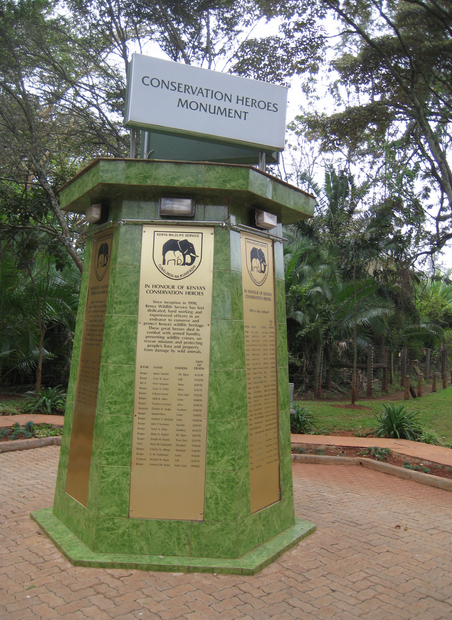
Picture above - KWS monument in honor of Kenyan Wildlife Rangers killed on active duty.
“Being a ranger was not a choice but a calling,” says Stephen Midzi, whose base is Shangoni Post in Kruger. “I was born for this, so had to fulfill what has already been written in my book of life.” Zakouma’s Ndotoingar says simply, “I’m proud of my work.” “Not a single guy has quit,” SANParks’ Jooste notes, adding that without the rangers like Midzi, poaching statistics would be a lot worse. “Look what would happen if we weren’t here.”
Every four days in Africa and around the world a ranger or Anti Poaching Operative is killed in their line of work. Many either face a quick death, are killed by contract shooters or tortured to death. The risks are endless yet wildlife security forces still risk their lives despite pittance [very little monetary income].
As explained International Animal Rescue Foundation Africa is challenging the South African government on shooting to defend of which the organisation wants a clear and precise “shoot to kill” law introduced for wildlife rangers and Anti Poachers not just SANDF. Furthermore I.A.R.F.A. calls on the government to not only authorize rangers to adopt this method of conservation but implement a NO conviction No Legal action clause within contract. Training and more equipment to be supplied to rangers too and rangers with no firearms to be equipped without delay.
International Animal Rescue Foundation Africa doesn’t stand alone either when it comes to such licence to kill policy. Over 90% of South Africans questioned agreed that a shoot to kill policy must be enforced to send a clear and precise message to poachers and king-pins that poaching will not be tolerated within the country. Should the organisation win it could see rangers in other countries authorized a licence to kill. Kenya is one such country on the continent of which KWS - [Kenyan Wildlife Service rangers] not only face death from poachers but are also heavily outnumbered by poachers that are slaughtering rhino and elephants.
The Peoples Verdict - Licence to Kill;
Back in November International Animal Rescue Foundation Africa and India started a public debate with regards to the shoot to kill policy. The debate has thus far seen quite a prolific response from which can be read below. Quite astonishingly we counted a mere dozen or more responses that were against the shoot to kill policy, whereas over 2,000 responses based from our Indian and South African debates called for a shoot to kill policy to be implemented.
Below is a handful of extracted responses for you all to read. You can join the debate by logging onto Facebook and clicking the link below. Alternatively you vote via our poll that will be the second third poll this year of which we will collect all results and begin passing these on to the government and ministries throughout Africa.
Roxanne Cochran stated - I am from South Africa. I agree fully with this notion. If they’re willing to take a life, they should be prepared to be shot down dead too. It’s very sad to see that most rhinos here have had there horns cut down for protection. It’s not natural and it breaks my heart that we have to go to such extremes to protect these beautiful creatures.
Gavin Hastings stated - Hello all, I am a serving soldier of the SANDF; I am just back from my 3rd deployment of 6 months from the Kruger. The problem id like to address is not man power or resources, it is the government of the country of South Africa and Mozambique who are now collaborating in the elimination of the species of rhino thanks to the bureaucratic impasse given to poachers of rhinos. As a soldier I am now “arresting” poachers. It is very difficult to maintain success and morale if you capture a person and he is extradited to re-do his killing the next week. I ask the international community to pressure my government. We need legislation to properly take care of the species survival and give the killers their fair due.
George Chimbai stated - In my country Malawi rhinos were once extincted and were re-introduced in the 1990s with rhinos from South Africa, without that Malawi wouldn’t have been boasting of having the BIG FIVE in its national parks and game reserves. South Africa as a supplier of endangered species to countries where they’re facing extinction I welcome and support the SHOOT TO KILL POLICY of these poachers.
Leisa Cope stated- I agree with shoot to kill only because I don’t see any other option. The consequences of killing animals not only brutally but into extinction needs to be this intense to at least make poachers think twice about what they are doing. If poachers choose to risk their lives then this is their own decision. How sad it is when it comes to this form of action.
Berdine Helderberg stated - Definitely shoot to kill - although, a warning shot might be needed first? (Legal wise..) Poachers know what they are doing, they know it is wrong and because they know they are untouchable, they continue committing these horrible horrible crimes. They simply do not care about the intense suffering of the animals and sometimes the babies too. If you can do it to a defenseless, helpless animal, you will do it to a human being too. Lastly, they will shoot any person that comes in their way, not thinking twice.
Kerryn Hay stated - Shoot to kill definitely. I have no sympathy for poachers even if they are disadvantaged/uneducated and trying to put food on table as some of you have argued - they are making the decision to brutally murder helpless animals and every action has consequences. Kill these criminals! why are we even considering giving them rights when animals have none. If it’s working in India then we must try it because nothing South Africa has done has helped thus far and time is running out while we debate the rights of ruthless criminals! I would prefer to see them die as slowly and painfully as the animals that they murder but let’s shoot to kill and make an example of them!
Heather Smith stated - These poachers are killing innocent animals, so why shouldn’t they expect the same treatment. Rangers are shooting to save these animals lives, poachers are shooting purely for money. You have my support all the way. Shoot to kill!!! Just as the poachers do.
Debbie Olivier stated - South Africa wake up! Allow our rangers to shoot to kill - no questions asked. We have entrusted our wildlife to them - we need to trust them with this too as they are well trained.
Donny De Mars stated - Why shouldn’t there be a shoot to kill law? I mean what makes you think these poachers would not do the same for any unarmed ranger who tries to bring them in. They are no better than drug traffickers and deserve even more severe punishment! A life for a life.
Robert Cates stated - I think a shoot to kill policy/law should be enacted not only to stop dead the ones doing it now, but also to SHOW/deter others thinking about doing it. I don’t think it should be even controlled by the police department… I think it should be an open season sort of policy… that should really put the scare in them.
Whoozie Blue Marlene stated - If you were running away from a bank having stolen a rare pink diamond the. The police would shoot you down dead. Are our rhinos not rare enough, aren’t they our beautiful pink diamonds?. Telling a poacher to stop or else does not work and if it does they are back in business chop chop. If this was installed it would work simply because no one wants to die. God left these animals in our care, so far the care has not been good enough I’m afraid. Protect our Rhino please because enough is enough !!
James Kipterem stated - I agree! Because rangers too are being targeted by these evil minded poachers. Even poachers, they have the same thought of “shoot to kill” whenever they meet rangers. So shoot to kill is the only remedy to a poacher, because, why break the law which we were passing together? that, ‘it is illegal to kill wild animals’. Instead of defending the law you break it. That is very bad. Always law defenders are more than breakers.
Jannette Slabbert stated - Any bad behavior must have real and costly consequences or you will never change it prison is obviously not enough of a penalty so if loosing your life is the price then so be it. It has proven effective in India then I say put the policy in SA too.
Russell Gordon stated - Future generation will blame us for not doing enough to have prevented the total extinction of the Rhino. So to address this now to preserve the Rhino for our future generations poachers and their ring leaders need to feel pain and by that I mean the ultimate sentence, the death penalty.
Laurian Knop stated - I vote shoot to kill poachers in self defense. Poachers are always armed and chose to kill the helpless and innocent. How many rangers have lost their lives to poachers? Self defense is not murder. Protecting those unable to defend themselves is not a criminal offense. Poachers are a scourge that need to be wiped out as they facilitate a bigger epidemic of terrorism, trafficking of drugs and children and general corruption. Why is this even being second-guessed? Do those opposed have something to lose should it be implemented?
Chris Switzer stated - I believe the continuity of a species, far outweighs any issues that might be brought up with regard to a shoot to kill policy. Poaching an endangered species, many of which on the brink of extinction, should be punishable by death.
Annmarie Botelho stated - I think that south Africa should have shoot to kill laws… if it keeps going the way it is we are going to lose are elephants and rhino …. it’s such a cruel trade and there really isn’t any need for it.
Gillian Curley stated - I don’t like the shoot to kill as the poachers are just doing what they are told to do and feed their families BUT something has to be done and if we can’t get the leaders and the buyers then yes sadly I agree to shoot to kill.
Marisol Davila stated - A policy of shoot to kill poachers will be a deterrent for the poaching business. Due to lax policies wildlife numbers are in the brink of extinction. Many economies depend on the tourism that wildlife attracts. Therefore, a harsh policy against poachers and their customers is key if any country wants to strengthen it’s economic survival in the long run. The message need to be loud and clear zero tolerance to poaching, no bits or ifs allow.
To take part in the debate that International Animal Rescue Foundation Africa is running you can comment by clicking here alternatively you can also hit the poll button below and tell us what you want. Please be aware that the poll expires one week from the date of this article of which we will not run another poll.
BEFORE voting please view the video below.
Conclusion;
International Animal Rescue Foundation Africa last year created data models that indicated their worst fears regarding wildlife poaching based on poaching deaths, natural deaths, gestation, deaths of unborn fetus, decreased populations of other larger fauna such as elephants and more. Model data has already shown that South Africa’s poaching rate will continue to increase and has provided very worrying numbers of final statistics supported by defense organisations working hard to stem the flow of poaching.
While none of us wants to see, read or hear of any living creature death - We must send a more stronger and decisive message into Asia and African poaching communities, and while tackling poaching is one thing we’ve also poverty to engage that will take the temptation away from individual opportunistic poachers that kill to fend for their families. Its these very communities that Asian traffickers and king-pins target as they know they are easy prey.
Look at it simply like this. If your living with no food, no electricity, no sanitation and require health support, are barely feeding your family or even yourself and living within a country that is doing little to decrease poverty then you will snap the chance up at anyone given moment to make money. Conservation organisations and leaders of Africa and world leaders must do more to decrease poverty around wildlife parks.
Failing this Data Models have shown that the white rhino will be verging near endangerment by 2017 of which the black rhino could be extinct in under five years within the wild [despite populations increasing]. Furthermore while the continent of Africa is still custodian to thousands of elephants, elephant populations are becoming more fragmented. Yesterday I.A.R.F.A reported a massive decline in South Sudan elephant populations that now stand at some 2,500. Giraffe populations are now at some 40,000 for the entire continent of Africa.
Bottom line is should Africa lose vast swathes of her wildlife then tourism will be affected too. Tourism brings in billions for the entire continent of Africa of which Africa’s wildlife is seen as the number one tourist attraction. A large number of countries depend on tourism for the economic growth. A recent study done for DFID concluded: “While poor countries only command a minority share of the international tourism market, tourism can make a significant contribution to their economies.
Eighty percent of the world’s poor (below US$1 a day) live in 12 countries. In 11 of these, tourism is significant and/or growing. Of the 100 or so poorest countries, tourism is significant (accounting for over 2% of GDP or 5% of exports) in almost half the low income countries and almost all the lower-middle income countries.” Using these same criteria and 1996 data, tourism is “significant” in an impressive number of African countries: Benin, Botswana, Burkina Faso, Cape Verde, Comoros, Djibouti, Eritrea, Ethiopia, Gambia, Ghana, Kenya, Madagascar, Mauritius, Namibia, Niger, Senegal, Sao Tome & Principe, Seychelles, Sierra Leone, South Africa, Swaziland, Tanzania, Togo, Uganda, Zimbabwe. Zambia and Mali just missed the cutoff in 1996.
According to the World Tourism Organization (WTO), Africa as a whole attracts just fewer than 4% of total world tourists and accounted for 2.0% of international tourism receipts in 1997. Of the Sub-Saharan countries, only South Africa is listed in the top forty tourism destinations worldwide, where it was 26th in 1997. The WTO calculated [1996] that Africa had just over 3% of world accommodation capacity (796,000 beds). The Africa region showed the strongest expansion in arrivals of any world region in 1997, up 8.1% over 1996. Furthermore, during the 1988-97 decade, Africa had an average annual growth of 7.2% in visitor arrivals, only slightly lower than East Asia/Pacific, which had the highest growth rate of all regions though from a much higher base than Africa. The average annual growth rate for tourist arrivals worldwide has averaged 5.0% for the past decade.
However - the number of tourists now arriving in SSA has grown over 300% since 1990, with 2012 marking a high of 33.8 million tourists who visited the region. Income generated from tourism has also climbed: Receipts from hotels, tours and other attractions in 2012 amounted to over US$36 billion and directly contributed just over 2.8% to the region’s GDP, according to the report issued by the World Bank back in 2013.
Wild animals are probably one of the first things people think of when asked about Africa. Seeing all the documentaries on television, we can only wonder and watch in awe as these mighty creatures roam the plains and jungles. Many are now protected in reserves and tourists can venture out on varying safaris to watch them in their nature habitats. What an incredible experience for both the amateur and professional photographer! Zambia holds the most natural of parks because the area is not accessible between November and March due to the waterways. Since the animals, plants, birds, and other natural elements are left alone, the area is truly spectacular when viewed each year after this rejuvenation period.
Safari rates as number four on many tour guide questionnaires when asking tourists why they wish to visit Africa. So in all if we continue to see such a vast decline in wildlife and lack of hard core enforcement we’ll most certainly see a copious decline in tourism revenue. I don’t need to explain what that will spell either.
International Animal Rescue Foundation has been challenged by only Humans Rights Christian Organisation of which stated we should not lobby or enforce a licence to kill poachers. All that can be said to the Human Rights players is that when there are no animals left, and revenue is seen as shrinking because of this then the Human Rights organisations can visit Africa and tackle more violent crime, lack of any employment, rape, murder, and more.
The time to act is now and not tomorrow. Stand by International Animal Rescue Foundation and help us enforce a shoot to kill policy within South Africa, Kenya and Tanzania.
Thanks
Board of Directors for External Affairs - Ead
Chief Executive Officer of Environmental Projects Africa - Michael L. Rooste
Chief Environmental Officer & CEO Dr Jose C Depre
Chief Environmental Registrar Europa - J. F. Williamson
External Affairs and Lead Investigation Officer - Vincent Van der spuy
externalaffairs@international-animalrescue-foundation.org.uk
You can help us by donating, to donate click the picture below that will take you to our donation application on Facebook. Alternatively you can donate to our communications site listed hereto at
www.international-animalrescue-foundation.org.uk
